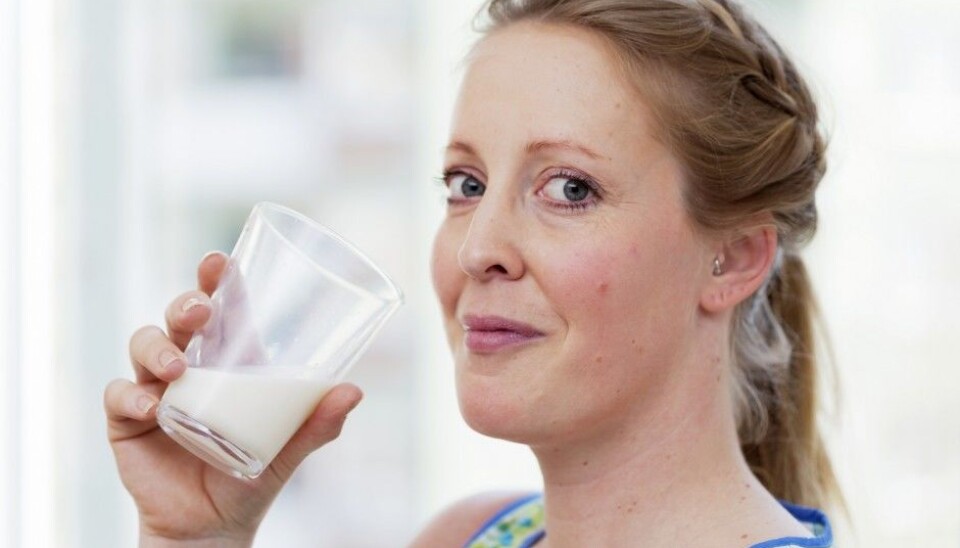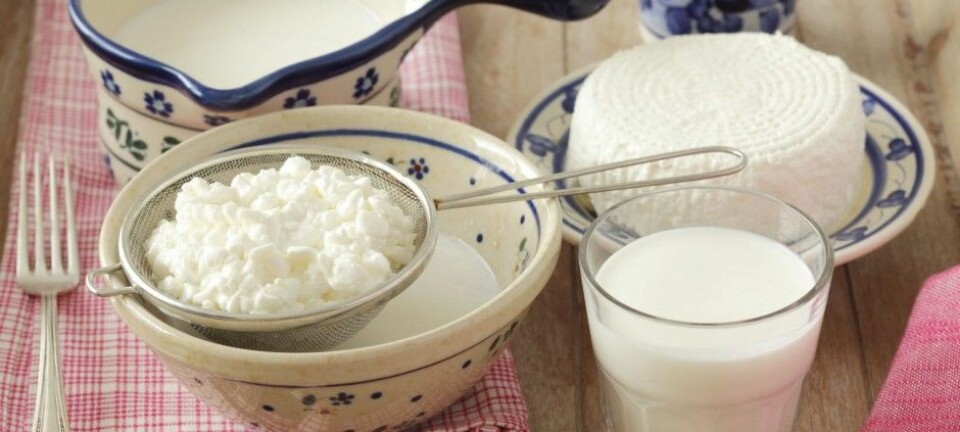
Milk-lovers should compensate with lots of fruit and vegetables
Many who drink a lot of milk on a daily basis lead shorter lives than those who don’t. Eating large amounts of fruit and vegetables can have a protective effect, according to a new study.
Many of us have been raised with the belief that milk helps make strong bones and can help prevent brittle ones – osteoporosis. Researchers at Karolinska Institute at Uppsala University have found a link between high, daily consumptions of milk and risk of a shorter lifespan.
Copious amounts of fruit and vegetables can counteract this mortality risk among persons who overconsume milk, according to a new study published in the American Journal of Epidemiology.
The same researchers initially published a study in 2014 showing a link between drinking large quantities of milk and the risk of mortality. The researchers found no connection between milk drinking and fewer fractured bones. That study was printed in BMJ and caused quite a commotion.
Three glasses or more
The Swedish researchers based their conclusion on dietary information from over 140,000 older women and men whose eating habits have been followed for as long as 29 years. The researchers have now conducted further analyses and looked at the impact of fruit and vegetable intakes in combination with milk consumption levels.
The Swedish team compared women who drank lots of milk and ate little fruit and vegetables with women who consumed little milk but lots of fruit and veggies.
They found that Swedish women who drank three glasses of milk or more and only one serving of fruit/vegetables daily had shorter lifespans than those who drank no milk, or maximum one glass, per day and five servings of fruit and vegetables.
The milk-lovers had over twice as high a risk of a premature death than those who drank little or no milk as the years went by.
Women who drank plenty of milk and ate lots of fruit and vegetables also ran a higher risk of a shorter lifespan than those who drank little milk, but their risk was less acute than that for Swedes who shirked at eating vegetables.
Male milk-lovers ran a somewhat higher risk of death than those who don’t but among them there was less covariance regarding both milk and vegetables than amongst women.
More risky for women?
The share that died early rose for women and men along with higher consumptions of milk and sank with intake of the antioxidant foods – fruit and vegetables. The researchers found that mortality among men started to rise when they drank three or four glasses of milk per day. The rise in mortality rates was seen among women who drank just one to two glasses per day. A glass was defined as 200ml.
“Our new research results bolster the hypothesis that a high intake of milk raises the risk of premature death by causing a chronic, low-level inflammation which is deleterious for health, especially among women,” says Professor Karl Michaëlsson at the Uppsala Clinical Research Center, to the local newspaper Upsala Nya Tidning. He was the first author of the study.
Oxidative stress
The differences in mortality risk can be attributed to lactose. The researchers reason that this milk sugar raises levels of oxidative stress in the bodies of milk-lovers. They think this is confirmed by the finding that intakes of fruit and vegetables, which are rich in antioxidants, appear to protect against this risk of early death.
The Swedish researchers write in their study that high intakes of antioxidants appear to moderate the elevated mortality rates among persons who drink a lot of milk.
The researchers found in animal experiments that ageing caused by the sugar type called galacatose – of which milk is a major source – can be prevented with higher intakes of fruit and vegetables.
Female animals seem to be more vulnerable to this premature ageing than their male counterparts.
Little about lifestyles
The Norwegian dairy industry information office and promoter Opplysningskontoret for Meieriprodukter (“www.melk.no”) says it is important to take such studies seriously. But they raise some criticism.
“The study from 2014 has several methodical weaknesses. Among other things, there were limitations on how closely and precisely the lifestyles of the participants were charted,” e-mails Nutritionist Ole Berg, a manager at melk.no, to ScienceNordic’s Norwegian partner, forskning.no.
Berg points out that as this was an observation study there is no assurance that the link found is a real cause-and-effect factor.
However, in their more recent study the Swedish researchers include an analysis of a diet’s total antioxidative capacity. A good antioxidative capacity is linked to lower risks of a host of diseases.
Regarding that, Berg says: “But there are big methodological challenges linked to measurements of antioxidative capacity. Therefore, such results have to be interpreted very cautiously.”
He thinks the study does not sway the general opinion in the nutritional field – that milk still has a natural position in a healthy and varied diet.
Biggest source of calcium and iodine
Berg thinks that every study is an important contribution to the general scope of science, based on a multitude of studies. He asserts that the bulk of science based on evaluations of conducted research shows no link between milk and mortality rates.
“One of these studies is from 2015 and was implemented by one of the authors of this new study,” says Berg. In short, that study found inconsistencies among studies regarding the link between milk intake and mortality from all causes.
Norwegian nutrition studies show that milk and dairy products are the population’s biggest sources of calcium and iodine. The Norwegian Directorate of Health recommends a daily intake of low-fat dairy products and
Melk.no has confidence in the research behind this recommendation. A consumption of three portions of dairy products daily can fill a person’s daily requirements for calcium and iodine, adds Berg.
The problem is milk fats
Professor Emeritus Christian A. Drevon at the University of Oslo Faculty of Medicine’s Department of Nutrition is not surprised by the recent Swedish study:
“The unfavourable feature of milk consumption is the milk fat. This leads to elevated cholesterol levels and a higher risk of heart attacks and mortality,” he said to ABC Nyheter.
He adds that he thinks observation studies need to be taken with a pinch of salt and that we should choose low-fat dairy products to help ward off cardiovascular diseases.
Drevon points out that some types of studies have too many uncertainties, and professionals bicker about which ones to rely on.
“Besides, farmers and the dairy industry are strongly engaged in defending their economic interests, subsidies and reputation,” commented Drevon to ABC Nyheter.
-------------------------------------
Read the Norwegian version of this article at forskning.no
Translated by: Glenn Ostling








